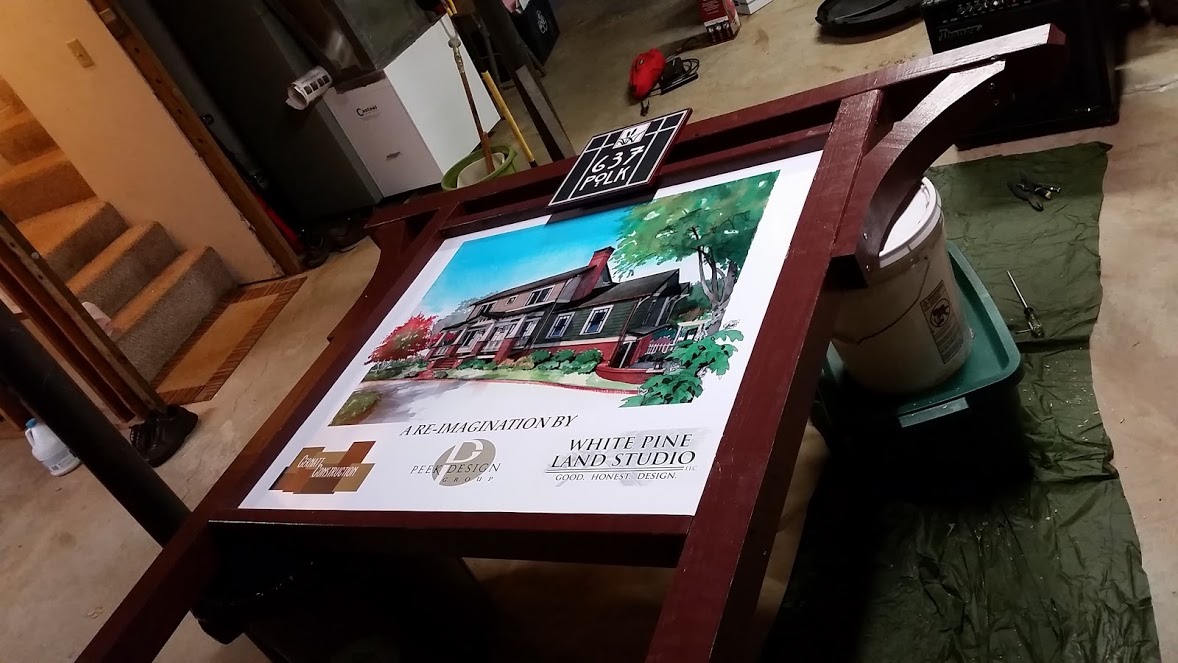When we decided to renovate, we had the idea to create this website so that folks like yourself could see what was going on with your crazy neighbors, and to perhaps help take some of the mystery out of the whole renovation process. The next thing we needed was a way to tell you there was a website! So Lauren Finley, our lead designer at Peek Design Group designed us a sign and David Lawrence, one of our key folks created all the wood pieces to match the design. We had the sign pieces made by Farmer Signs down in Smyrna and then it was ready to assemble and paint.
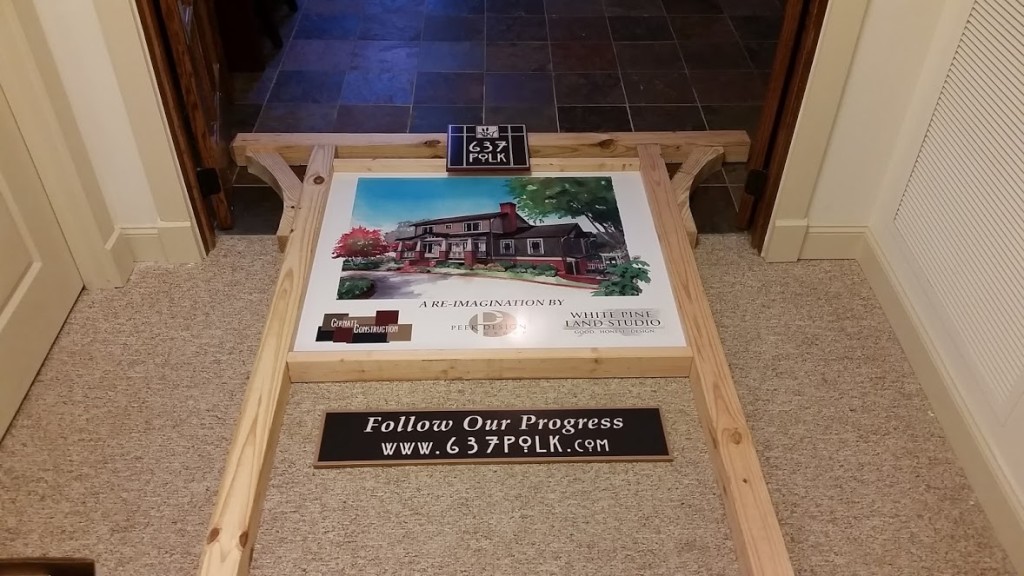
Once we were sure everything fit and we got clearance from the City of Marietta Zoning folks, Dale set up shop in the Basement at the house and assembled and painted the sign. It took a few days of part-time work to pull it all together, but we were pleased with the outcome and are anxious to get it up so the never-ending traffic on Polk Street can see what’s going on.
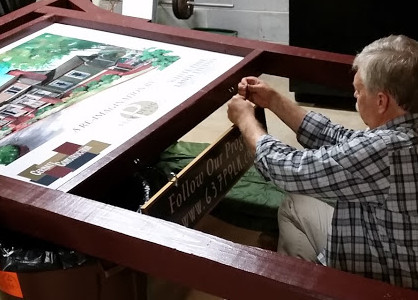
In the mid 2000’s, an old friend of ours, Ed Hatcher had the idea to build authentic ‘Craftsman’ houses in downtown Smyrna in the middle of a whole neighborhood of authentic homes from that period. Some were to be built on empty lots where houses had once been, and others were ‘tear-downs’ had outlived their usefulness. Ed hired us at Peek Design Group to design the houses which he wanted to look authentic, but have updated floor plans. We had been doing exactly that for a few years, so we knew exactly how to help him out. He related to Dale that during and after construction of these new houses, several neighbors had told him how much they appreciated him ‘renovating’ these house. He tried to explain that they were ‘new’, not ‘renovated’, but they would have nothing to do with his explanation.
This is exactly the reaction that we hope to have with our house – that it is an authentic ‘Craftsman’ that has been renovated, and that the reproduction is so authentic looking that folks will think that it is really a hundred year old house that has been restored. The result of that quest is that there will have to be a great deal of new details introduced that were common during the ‘Arts and Crafts’ period of architecture, but are not so common today. This is going to entail some additional expense, but will hopefully be worth it when everything is said and done. To that end, we knew that our trusty old prefab fireplace that had kept us warm many cold days would have to go. It can still burn a good fire, but the design was very obviously a 1980’s prefab unit, and there was no such thing a hundred years ago. We were going to need to create the appearance of a masonry fireplace – so the first thing that had to go was the dated stone veneer and the cedar mantle that were so popular when our house was built.
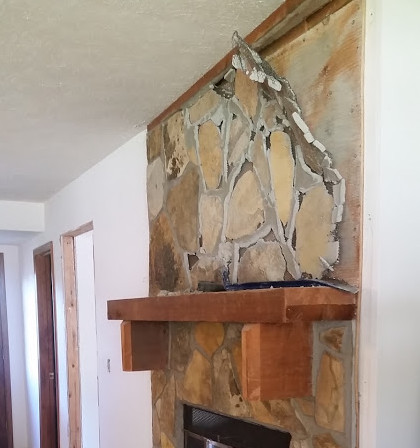
The stone was a thin veneer held up with a ton of mortar embedded into metal lath which was secured to a plywood backer panel with what must have been a hundred nails and staples. After significant effort, it finally came down revealing the plywood.
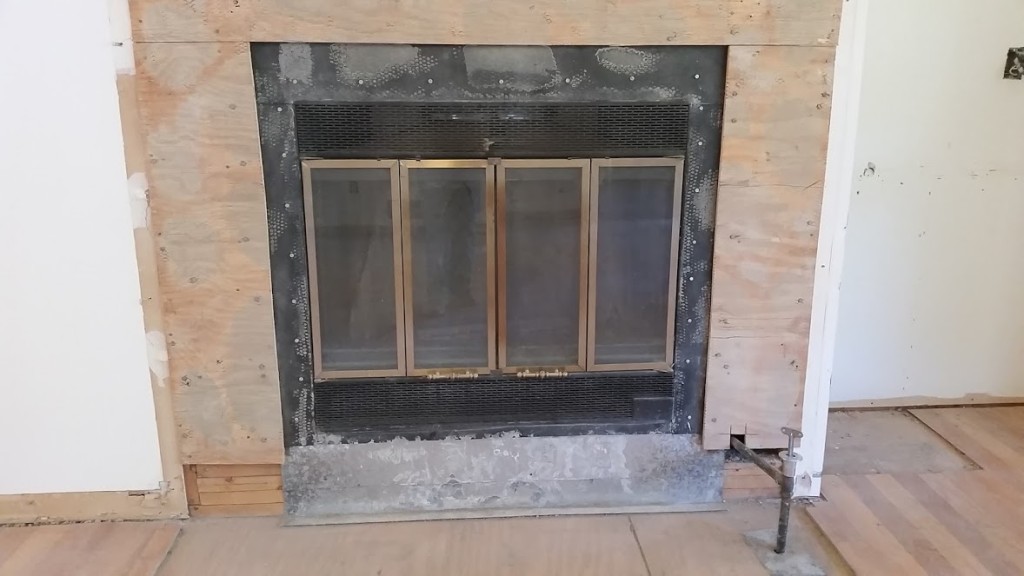
After another hour or two we were able to get through the rest of the veneer and then the hearth which was supported by cement blocks. Finally the stonework is gone and we are ready to get the fireplace itself out of the wall. But our daylight is gone and it will have to wait until later.

